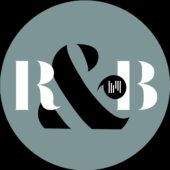LUNAR ECLIPSES IS SET TO HAPPEN IN NAIROBI
Written by Elizabeth Nyambura on May 16, 2022

Have you ever wondered about the Lunar eclipse in Nairobi? At what time will the eclipse begin? When was the last solar eclipse visible from Nairobi?

The Full Moon in May is known as the Flower Moon. Other names include the Planting Moon, and the Milk Moon, while some named it the Hare Moon. On May 15-16, 2022, the flower moon will be totally eclipsed and turn red!
A Lunar eclipse occurs when the moon moves into the Earth’s shadow. This can occur only when the sun, Earth, and moon are exactly or very closely aligned with Earth between the other two, which can happen only on the night of a full moon.

A database of solar eclipses that have been seen and can be seen in Nairobi during this century.
Fun fact: If you were lucky enough to see a total lunar eclipse from the Moon, you’d see a red ring around the Earth. In effect, you’ll be seeing all the sunrises and sunsets taking place at that specific moment on Earth!

| Eclipse Visibility From Nairobi | Visibility Worldwide | ||
|---|---|---|---|
| 16 May 2022 Partial Lunar Eclipse | Total Lunar EclipseSouth/West Europe, South/West Asia, Africa, Much of North America, South America, Pacific, Atlantic, Indian Ocean, Antarctica | ||
| 5 May 2023 Penumbral Lunar Eclipse | Penumbral Lunar EclipseSouth/East Europe, Much of Asia, Australia, Africa, Pacific, Atlantic, Indian Ocean, Antarctica | ||
| 28–29 Oct 2023 Partial Lunar Eclipse | Partial Lunar EclipseEurope, Asia, Australia, Africa, North America, North/East South America, Pacific, Atlantic, Indian Ocean, Arctic, Antarctica | ||
| 18 Sep 2024 Partial Lunar Eclipse | Partial Lunar EclipseEurope, South/West Asia, Africa, North America, South America, Pacific, Atlantic, Indian Ocean, Arctic, Antarctica | ||
| 7 Sep 2025 Total Lunar Eclipse | Total Lunar EclipseEurope, Asia, Australia, Africa, West in North America, East in South America, Pacific, Atlantic, Indian |
Stages and times of the eclipse are outlined below. All times were local time (EAT) for Nairobi.
| Time | Phase | Event | Direction | Altitude |
| 04:32Mon, 16 May | Penumbral Eclipse beginsThe Earth’s penumbra starts touching the Moon’s face. | 249° | 25.6° | |
| 05:27Mon, 16 May | Partial Eclipse beginsPartial moon eclipse starts – moon is getting red. | 250° | 12.9° | |
| 06:25Mon, 16 May | Maximum in NairobiThis is the moment when the eclipse reaches its greatest magnitude while the entire Moon is above the horizon in Nairobi. The true maximum point of this eclipse cannot be seen in Nairobi because the Moon is below the horizon at that time.Since the Moon is near the horizon at this time, we recommend going to a high point or finding an unobstructed area with free sight to West-southwest for the best view of the eclipse. | 250° | 0.2° | |
| 06:28Mon, 16 May | Setting | MoonsetSetting, but the combination of a very low moon and the total eclipse phase makes the Moon so dim before it sets, that it might disappear from view some time before it sets. | 250° | -0.2° |
| 06:29Mon, 16 May | Not directly visible | Total Eclipse beginsBelow horizon | 250° | -0.4° |
| 07:11Mon, 16 May | Not directly visible | Maximum EclipseBelow horizon | 250° | -10.6° |
| 07:53Mon, 16 May | Not directly visible | Total Eclipse endsBelow horizon | 248° | -20.1° |
| 08:55Mon, 16 May | Not directly visible | Partial Eclipse endsBelow horizon | 245° | -33.5° |
| 09:50Mon, 16 May | Not directly visible | Penumbral Eclipse endsBelow horizon | 240° | -45.3° |






 NRG Radio Uganda
NRG Radio Uganda  NRG JAZZ
NRG JAZZ  NRG MIXOLOGY
NRG MIXOLOGY  NRG RnB
NRG RnB  NRG AFROBEATS
NRG AFROBEATS  NRG GOSPEL
NRG GOSPEL  NRG DANCEHALL
NRG DANCEHALL  CHOICE.RADIO
CHOICE.RADIO  NRG HIPHOP
NRG HIPHOP